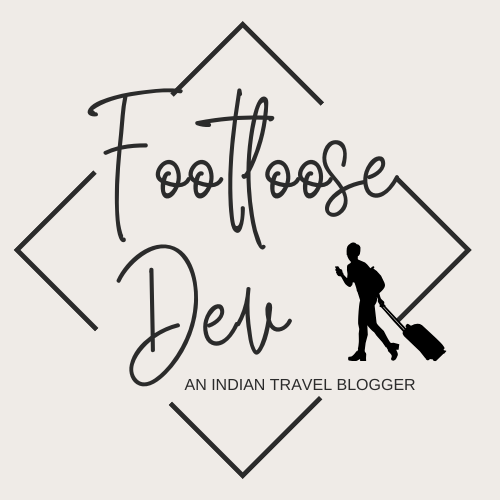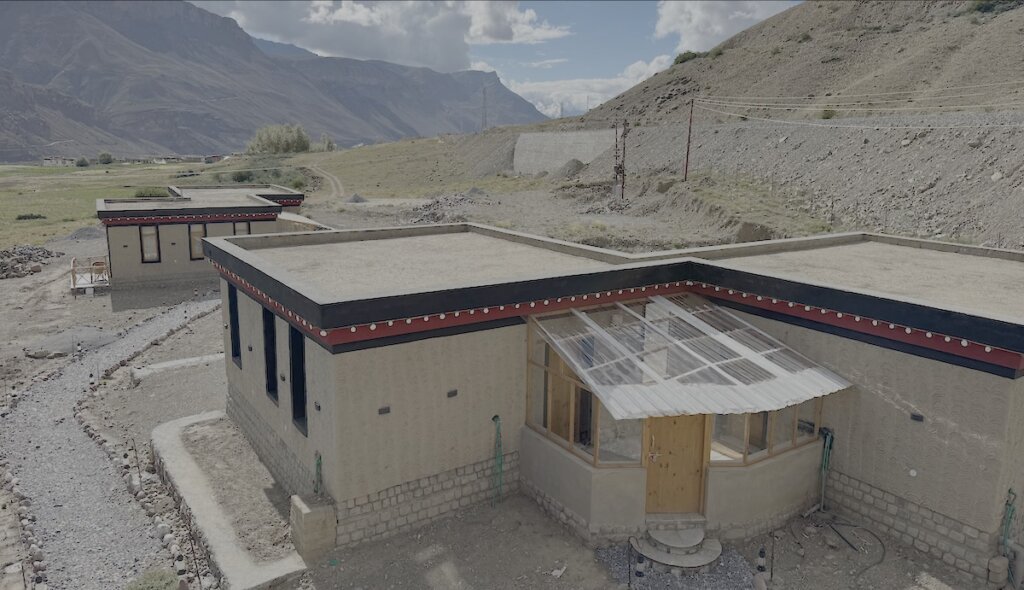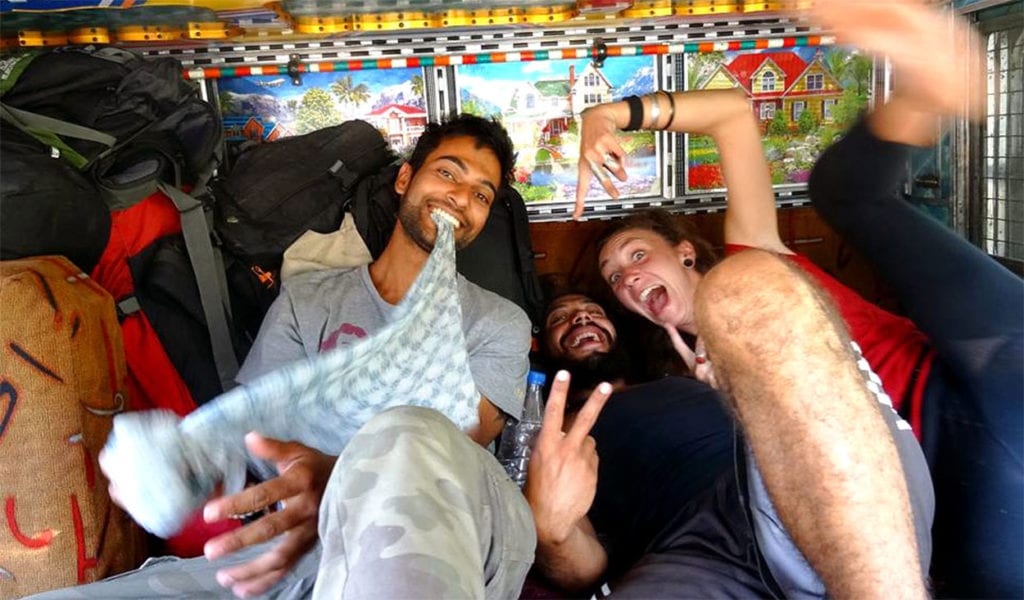When people talk about staying in Spiti Valley, the first name that pops up is Kaza – the administrative and commercial hub of the region. But here’s a little secret from my own travels: if you want quieter nights, bigger views, and better stays, Rangrik is where you should be.
Located just across the Spiti River, a 10-minute drive from Kaza, Rangrik is technically a village but feels much more spread out and peaceful compared to the hustle-bustle of Kaza. Over the years, I’ve realized that most of the region’s best hotels, camps, and resorts are not in Kaza itself, but in Rangrik. And once you’ve stayed here, you’ll understand why many repeat travelers to Spiti make Rangrik their base.
Where is Rangrik?
It is a small village in the heart of Spiti Valley, about 7 km from Kaza. It sits at an altitude of around 3,700 meters and overlooks the Spiti River with snow-covered peaks in the distance. While Kaza has grown into a busy market town with banks, shops, and crowds of tourists in peak season, this town has retained its open landscapes and village charm.
If Kaza is for errands, Rangrik is for peace.
How to Reach Rangrik
Reaching Rangrik is the same as reaching Kaza since they are practically neighbors.
- From Manali: Around 200 km via Atal Tunnel – Kunzum Pass – Losar – Kaza – Rangrik. This route is open only from June to October. Here’s a Youtube Video of the route…
- From Shimla: Around 420 km via Rampur – Nako – Tabo – Kaza – Rangrik. This route is longer but open for most of the year.
You can read more about this route in this detailed Spiti Valley Itinerary. I planned a camping trip throughout this trip when I wrote this itinerary. You can read those too on this blog.
- Nearest airport: Bhuntar (near Kullu), though not very reliable. The more dependable option is Chandigarh or Shimla.
The last stretch is easy – once you reach Kaza, Rangrik is just a 10-minute drive. Many travelers choose to stay in Rangrik and head into Kaza for shopping, ATM runs, or eating at famous cafes.
Why Visit Rangrik Instead of Kaza?
This is the real question, isn’t it? For me, the answer is simple: space, silence, and scenery.
- In Kaza, guesthouses are cramped together in the market area.
- In Rangrik, stays are built on wide-open land with views of the Spiti River, starry skies at night, and no honking taxis around.
I have stayed in Kaza many times and have even recommended some hotels in my previous blog. But this time, I stayed in Rangrik and the hotel I stayed at was beautiful. You can read more about it later in the article where I have discussed hotels in Rangrik in more detail.
If you’re the kind of traveler who prefers sipping tea while watching the mountains instead of being stuck in a dusty bazaar, Rangrik is your place.
Things to Do in and Around
While Rangrik itself is more about slowing down and soaking in the views, its location makes it a perfect base to explore Spiti’s highlights:
- Walks along the Spiti River – peaceful trails right outside the village.
- Stargazing & astrophotography – less light pollution than Kaza.
- Village life – interact with locals and see how life survives at 3,700m.
- Short day trips to Langza, Hikkim, Komic, Kibber, and Key Monastery – all within 1–2 hours.
The beauty of staying in Rangrik is that you can enjoy the peace of the village but still access every attraction around Kaza with ease.
Places to Visit Nearby
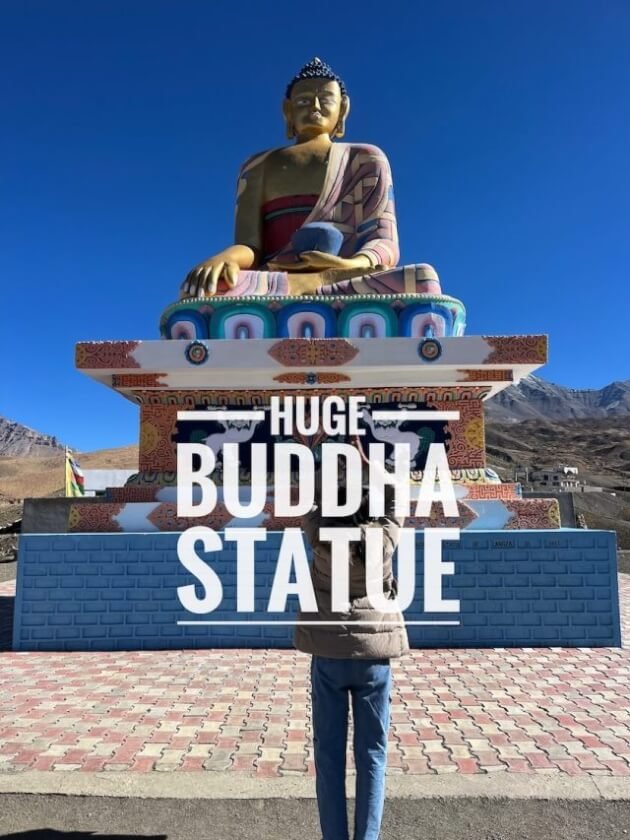
Some of Spiti’s most famous landmarks are within quick reach of Rangrik:
- Key Monastery (15 km) – the biggest monastery in Spiti, a must-visit.
- Kibber Village (19 km) – gateway to snow leopard spotting.
- Chicham Bridge (22 km) – the highest suspension bridge in Asia.
- Langza (15 km) – the fossil village with the giant Buddha statue.
- Hikkim (16 km) – home to the world’s highest post office.
- Komic (18 km) – among the world’s highest villages.
Accommodation in Rangrik
Here’s the real game-changer: the best hotels in Spiti are in Rangrik, not Kaza.
Why? Because this town has more open land for construction, so you get proper resorts, luxury camps, and boutique stays with real views. Kaza, being packed and busy, doesn’t offer the same experience. Here’s a photo of the hotel in Rangrik where I stayed. Check it out…
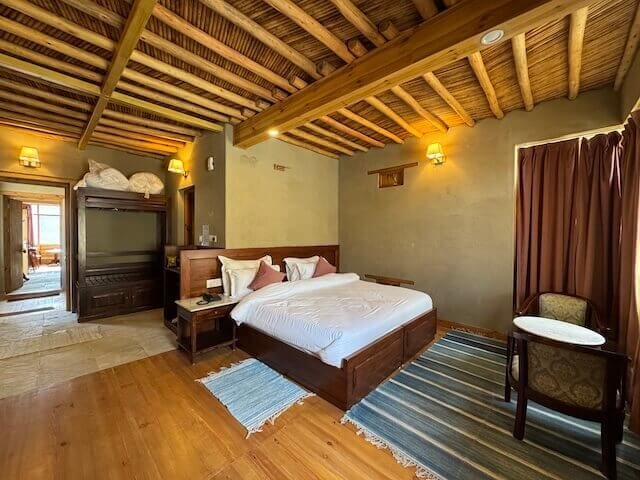
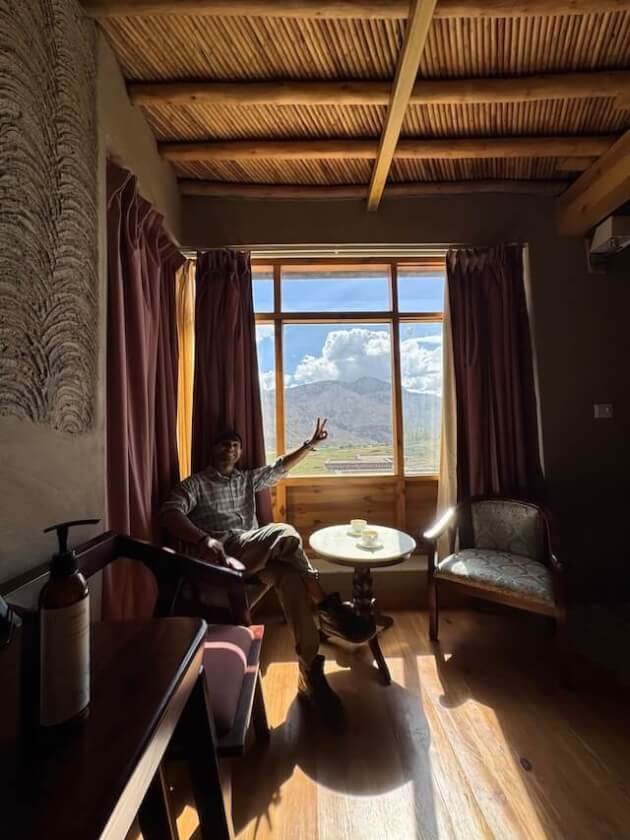
Some well-known hotels and stays in Rangrik include:
- Luxury camps and boutique properties offering panoramic views.
- Family-run guesthouses where you get home-cooked meals.
- Proper resorts with heating, hot showers, and big rooms (a rarity in Spiti).
If you want comfort at high altitude, Rangrik is the answer.
One of the most well-known stays here is Amida Rangrik, a boutique property that perfectly captures the balance between comfort and Spitian minimalism. Unlike most guesthouses in Kaza that feel cramped, Amida offers spacious rooms, wide terraces, and views that stretch all the way across the Spiti River. What I loved about Amida is how it blends modern amenities with local aesthetics.
I spent two days here and loved my stay. I am currently doing a Youtube Video on this hotel that I will publish soon.
Best Cafe & Restaurant In Rangrik
While Kaza is famous for its cafes (The Himalayan Café, Sol Café, etc.), this town offers something different – authentic home-style Spitian food. Most homestays and hotels provide delicious meals with locally grown ingredients.
My favorite experience in Rangrik has been eating thukpa, tingmo, and yak-butter tea in a family kitchen while looking at the Spiti River through a window. You won’t get that kind of warmth in Kaza’s busy cafes.
Best Time to Visit Spiti Valley
- Summer (May–September): Best season, with open roads and pleasant weather.
- Autumn (October): Cold but magical with golden landscapes.
- Winter (November–April): Harsh, with limited stays operating, but if you want solitude, this is it.
Since Rangrik is less touristy than Kaza, even in peak summer, you’ll find quiet spots to yourself.
Travel Tips
- Altitude: At 3,700 m, spend a day acclimatizing. Don’t rush.
- Network: Jio and BSNL work better than Airtel. Internet is patchy but hotels provide Wi-Fi.
- ATM & Petrol Pump: Available only in Kaza (7 km away).
- Health: A hospital is in Kaza, but carry personal medicines.
- Sustainability: Avoid plastic bottles; use refill stations.
Local Culture & Life
Like much of Spiti, Rangrik follows Tibetan Buddhism. Prayer flags flutter across homes, locals wear traditional woolens, and life moves at a slower pace. Unlike Kaza, which feels more commercial, Rangrik still feels like a village. If you want to witness Spitian hospitality without the tourist rush, Rangrik is ideal.
Suggested Itinerary With Rangrik
- Day 1–2: Arrive in Rangrik, acclimatize, explore Kaza market.
Whether you’re coming via Manali or Shimla, the first day is going to be long and tiring. Roads to Spiti are rough, and you’ll also be climbing to nearly 3,700 meters in altitude. You are most probably coming from Manali to Spiti Valley, or doing the entire Shimla to Spiti Valley circuit.
If coming from Shimla, you won’t need to acclimatize in Rangrik. So you can skip Day 1 and 2 and begin directly with Day 3.
If you are coming from Manali, you need to acclimatise. Because at this altitude, your body needs at least a day to get used to the thin air. Staying in Rangrik gives you wide-open spaces, quiet surroundings, and cleaner air compared to the slightly dusty and crowded Kaza town.
- Day 3: Visit Key Monastery, Kibber, and Chicham Bridge.
Morning: Drive to Key Monastery (15 km, ~30 minutes). It’s one of Spiti’s most iconic landmarks, perched dramatically on a hilltop. Since you’re starting from Rangrik, you’ll beat the Kaza crowds and get a more peaceful visit.
Midday: Continue to Kibber Village (7 km further). Known as one of the highest motorable villages in the world, Kibber is also the entry point to the Kibber Wildlife Sanctuary — home to the elusive snow leopard.
Afternoon: From Kibber, drive another 3 km to Chicham Bridge — Asia’s highest suspension bridge spanning a 1,000-foot-deep gorge. Standing here is an experience in itself.
- Day 4: Explore Langza, Hikkim, and Komic.
Morning: Drive towards Langza (15 km, ~40 mins). Famous as the “Fossil Village,” Langza is known for marine fossils embedded in rocks and its massive Buddha statue overlooking the valley.
Midday: Continue to Hikkim (5 km from Langza), where you’ll find the world’s highest post office. Sending a postcard from here is a classic Spiti souvenir.
Afternoon: Head further up to Komic (another 5 km). Often listed as the world’s highest inhabited village, Komic has a monastery, jaw-dropping views, and air so thin you’ll feel every step you take.
Why Rangrik is Better Than Kaza
Over the years of traveling across Himachal, I’ve learned that your base makes or breaks your trip. Kaza is convenient, yes, but it’s noisy, crowded, and lacks views. Rangrik gives you everything Kaza doesn’t – open skies, peaceful vibes, and better places to stay.
Whenever I’m in Spiti now, I stay in Rangrik. I head to Kaza for errands or a quick café stop, but I return to Rangrik for what I really came to Spiti for: silence, mountains, and that endless Spiti sky full of stars.
If you have a question or would like to connect, please find me on Instagram. You can also follow my YouTube channel for video updates.
